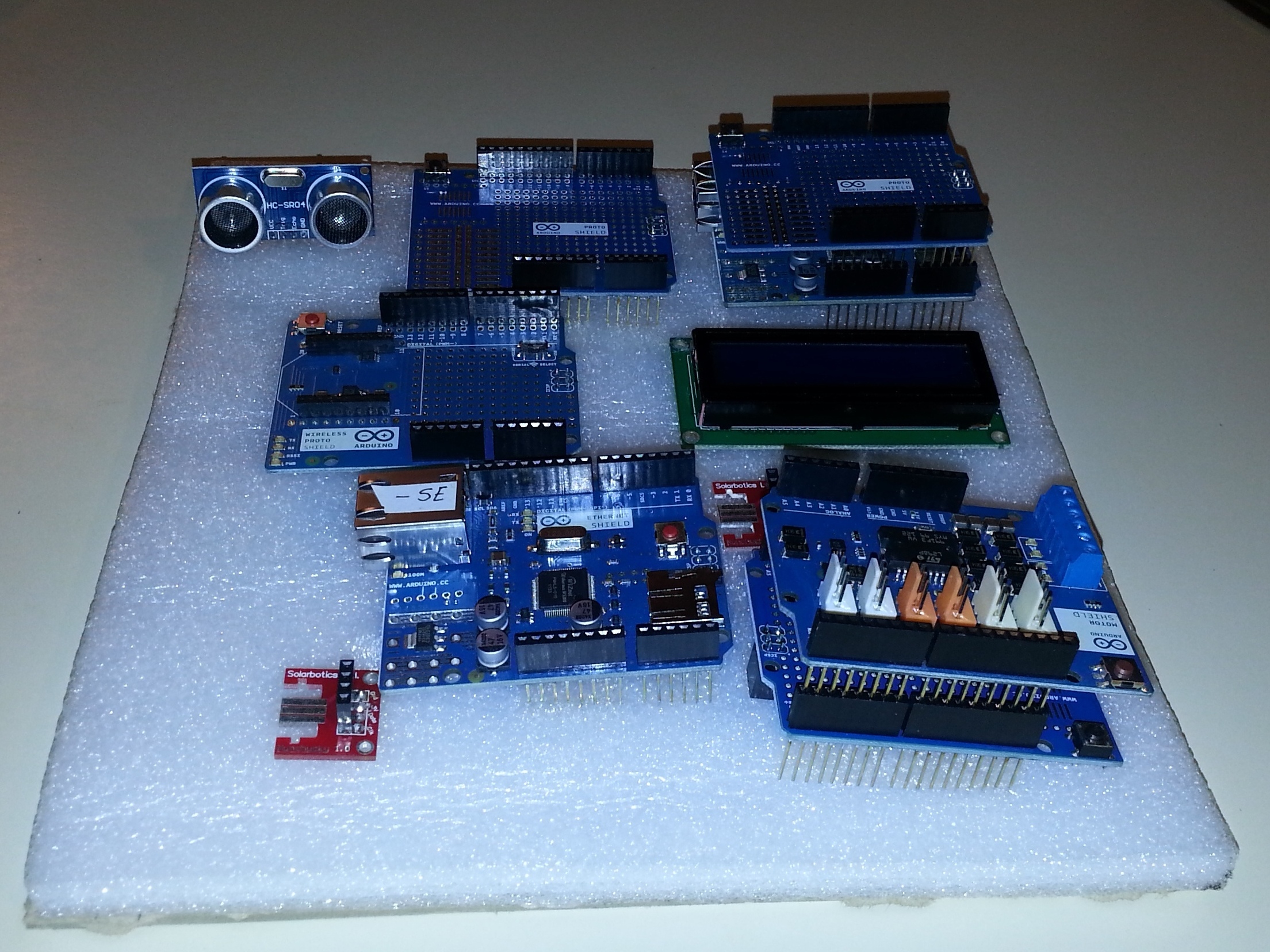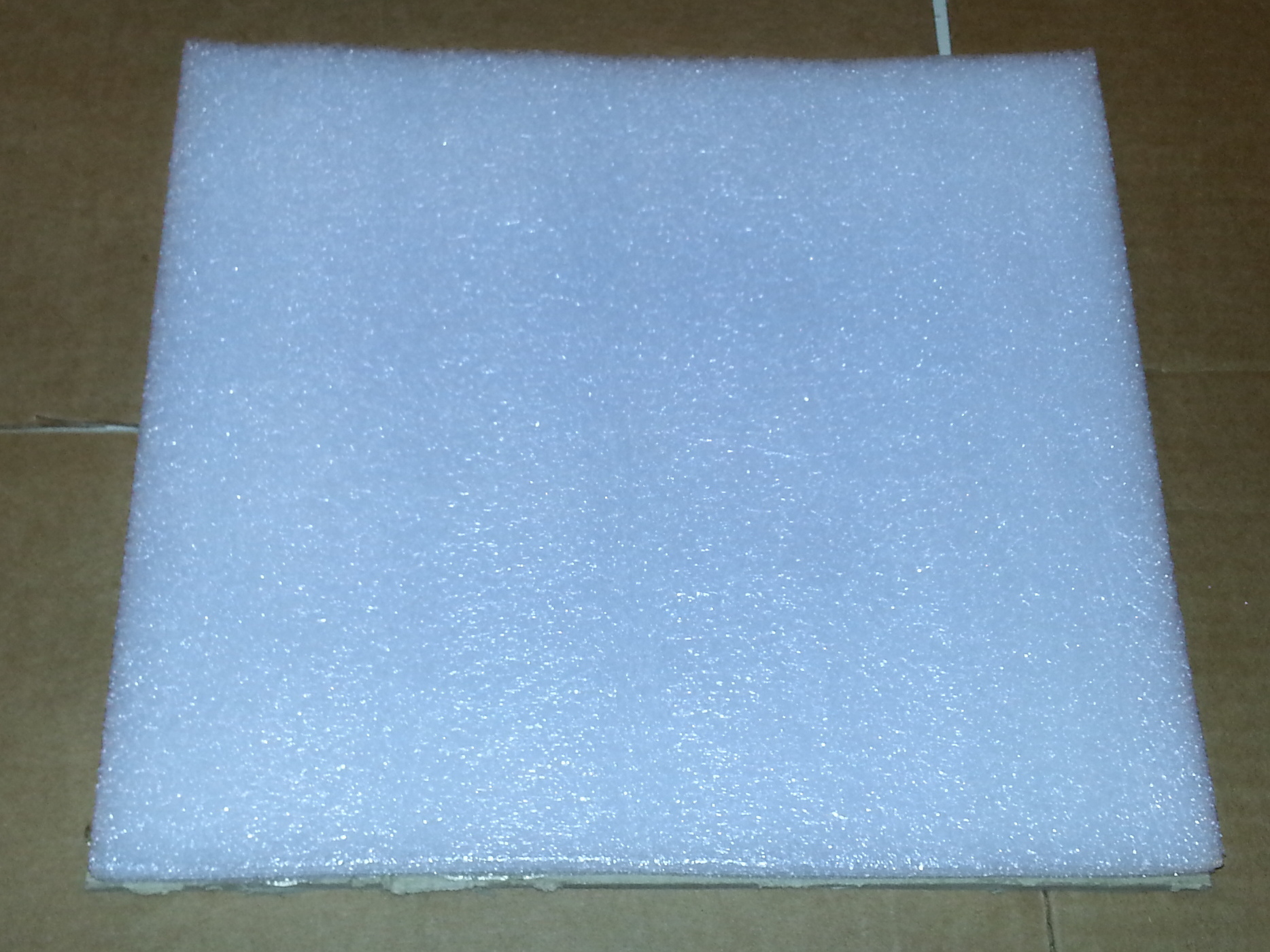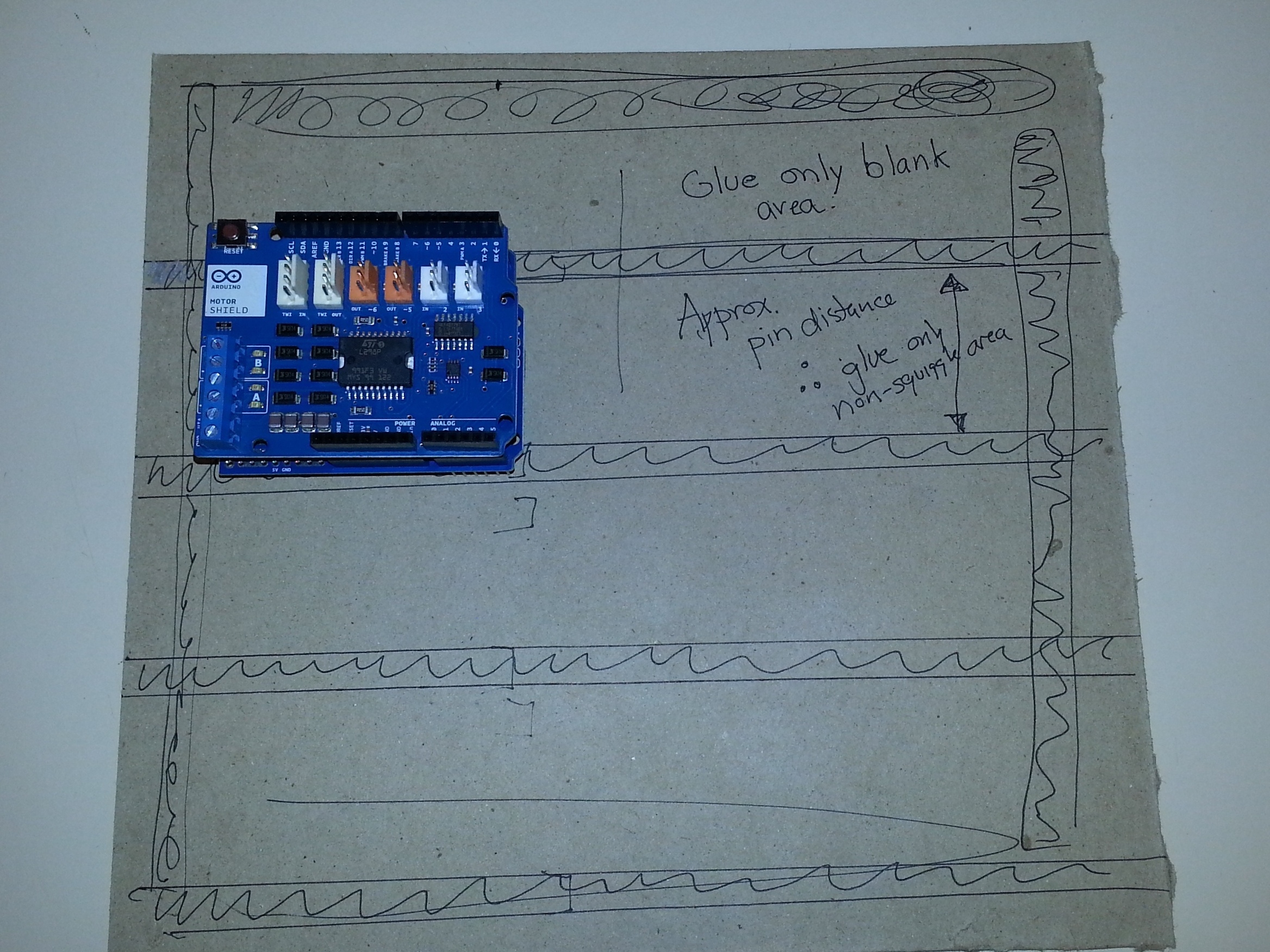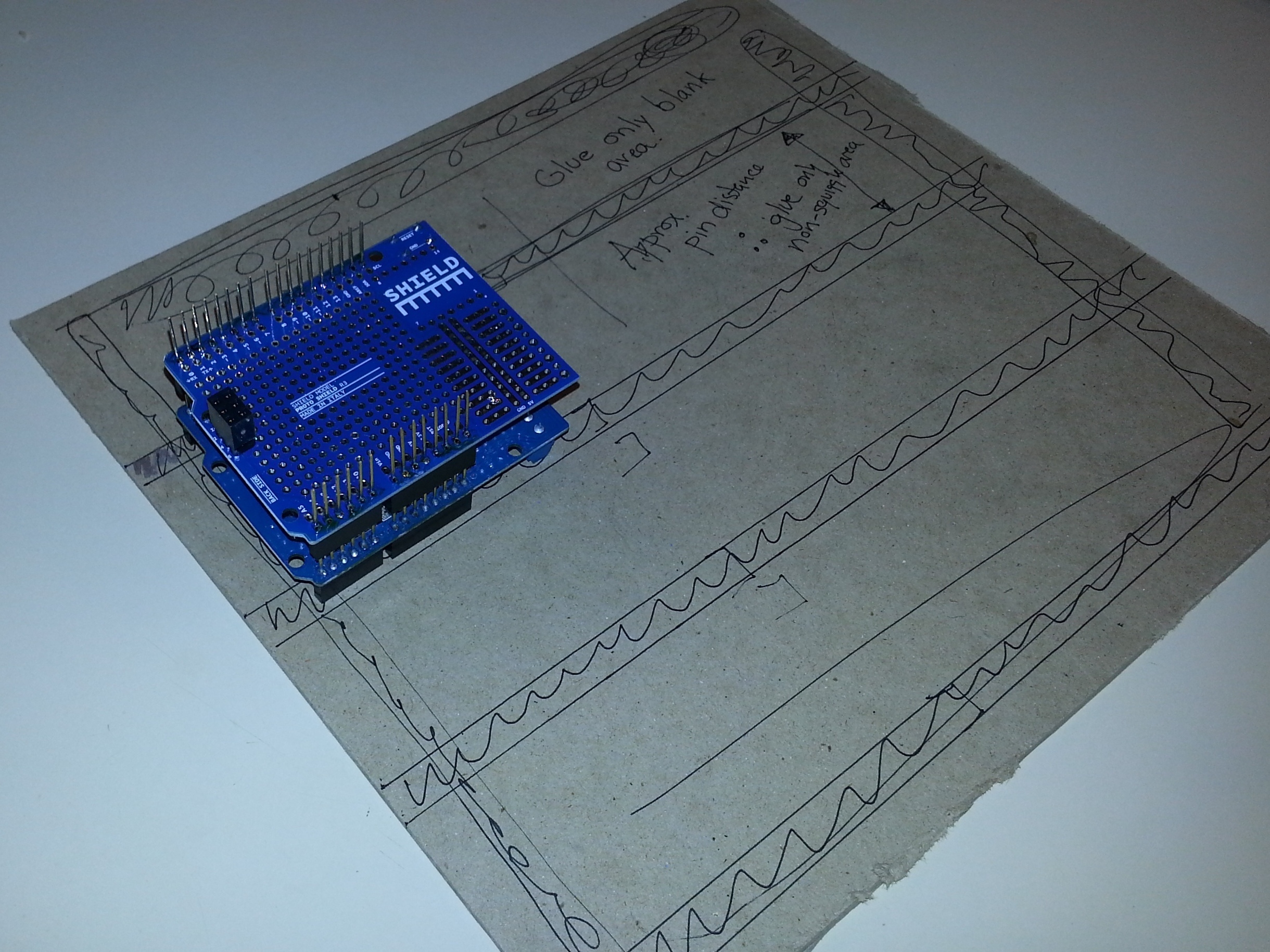If you are like me then you have to travel to your maker space, but how do you pack up all those Arduino shields and other PCBs with header pins?
The solution is simple: take a rigid lightweight board and give it a plastic foam top.
Your shields can ride in the secure comfort of foam rigidly backed with Davey binder’s board.
No more poking bags or fingers in transit with this simple solution, and it is a project ready for further customization: why not make its dimensions fit inside a toolbox or a plastic container? There are many ways you can expand this simple and effective portability solution.


















